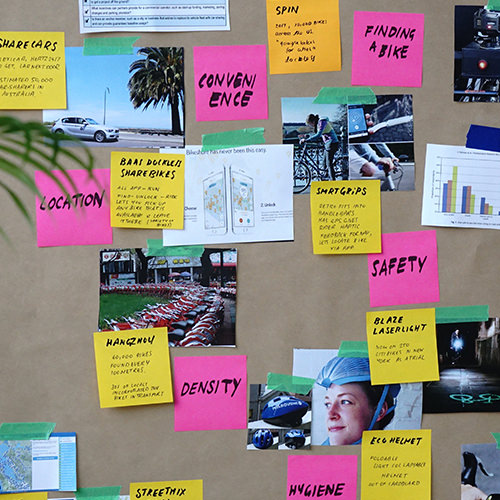Great user experiences aren’t built by accident. Delivering a compelling user interface requires coordinated effort and the specialized expertise of designers, engineers, and product managers skilled at understanding and building for the unique needs of your customers. Too often, though, organizations large and small fail to see the nuance in specific skill sets needed within one of these general job functions: front-end development.
When companies compete on customer experience, the user interface of your product plays an out-sized role in the user’s perception of your company. It’s easy to embrace this idea in theory, but many companies fail to act on it and neglect to employ front-end engineers who are specialized in building performant, accessible, and responsive web interfaces. Without a strong focus on front-end development, your organization is limiting its own ability to grow your product or web experience and serve your customers at scale.
To business leaders without a strong technical background, it’s easy for engineering roles to look similar, but it’s increasingly important to understand the unique value gained by employing each. “Server-side” or back-end engineering roles are critical for getting a product or website to work functionally, but the skills and experience needed to architect databases and manage server data requests are distinctly different from the “client-side,” browser-based skills of a front-end engineer. Front-end engineers are developers well versed in some combination of HTML, CSS, JavaScript, and modern JavaScript frameworks (e.g., React, Angular, Vue). Engineers with specialized skills in these areas are often overlooked, but they’re critical to taming the complexity of client-side architecture and code in 2019. Let’s examine why.
A modern front-end requires thoughtful architecture and technology decisions.
HTML and CSS are fundamental components of the web and, as such, are relatively understandable to people with a hint of technical acumen. Too often, though, engineers have confused “easy to learn” with “easy to master,” and these languages are mistakenly seen as introductory skills on the way to “real” engineering, instead of as the specialized track of expertise that they are. In reality, front-end development requires a solid HTML/CSS strategy and an architectural plan for managing the use of these languages over time as your product or site grows, pivots, and gets more complex. Without this preparation, client-side code will quickly deteriorate into a patchwork of Band-Aids and hotfixes that leave the user experience — one of the main things your customers judge you on — inconsistent and uncompelling. With early investment in front-end architecture, you’ll earn interest as the product grows and scales instead of accumulating burdensome technical debt.
Additionally, the explosion of JavaScript frameworks, automated build systems, CSS preprocessors, and other development tools has created a whole new set of technology decisions that need to be made by engineering teams. Without someone on your team with the specialized knowledge to thoughtfully select the right tools for your particular industry and product context, you are effectively guessing on decisions that will affect everyone working on your application for years to come. Tools ill-suited for your team and objectives will leave your team spending less time working and more time figuring out how to work amidst these organizational constraints. An experienced front-end engineering team will make strategic front-end technology decisions and enact a progressive HTML/CSS architecture plan that will help your team work faster and spend more time shipping quality code.
Front-end engineers accelerate design via rapid prototyping and production-level design systems.
Beyond the positive additions to a development team, front-end engineers can also bring great benefits to an organization’s design practice. During the formative parts of a software project, a front-end engineer can help to shorten the cycle between early idea and validated concept by prototyping directly with code, the medium a given feature will ultimately need to be built in.
Many times, a basic HTML/CSS prototype can identify design issues, validate data requirements, and gather user feedback faster and more effectively than static mockups and hand-waving. Doing this early evaluative work also helps to spread a better understanding of the targeted end users by letting everyone see the interface evolve as the team learns more about what users need from it.
When it does come time to ship validated features in production level code, front-end engineers are in a prime position to build with an eye for code consistency and repeatable UI components in line with the principles of a design system. With clear documentation of patterns and efficiently built components, it’s much easier for engineering teams to build new features from battle-tested, accessible UI foundations. Organizations as varied as IBM, Atlassian, and the UK Government, for example, employ teams of front-end engineers who use design systems to grow and scale their digital products. With a well-architected front-end design system in place, digital product teams can spend more time solving the needs of their customers instead of wrangling old UI code.
A part-time focus on the front end is really just an occasional focus on your customers.
When building digital products, don’t let the very first thing your customer sees be the last thing you devote team resources to. Like the critical spice that unlocks the flavor of other ingredients in a great dish, front-end engineers multiply the effectiveness of their peers in design and back-end engineering. Without some dedicated representation in this critical role, your digital product or website won’t have the greatest appeal for users and your product team will have to work harder to ship even the simplest new feature.
Want to improve the experience your customers have with your digital product or website? Add a full-time front-end engineer to your team and start treating your product’s user interface as more than a second class citizen. Your team will thank you, your organization will feel the long term benefits, and your customers will get a better user experience, helping you stay a step ahead of the competition.
Need help understanding front-end development and how you can find team members in this specialized field? Cantina has been designing and building great UI for our clients for more than decade. We can both jumpstart the front-end development of your product and help you understand the mix of client-side skills and experience your organization should consider hiring.
Contact us to hear more about the work we’ve done and the methods we’ve used to build great user experiences with our clients.
A special thank you to Allison Sigrist, Greg Genovese, Jaime Abramson, Maxwell Legocki, Randy Duke, Shawn Neacy, and Wayne Elgin for contributing to this article.



